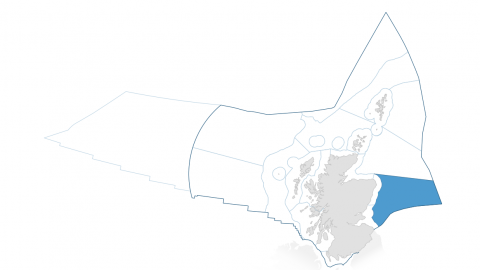The tables in this section reflect the output of the workshop (October 2019) when the pressures from human activities were assessed for the period 2014 to 2018 for the region. The summary text below the tables elaborates on some of the points that were made at the workshop.
This pressure assessment uses the FeAST classification which includes two abrasion pressures: surface abrasion & sub-surface abrasion. Some expert groups combined these as a single pressure "surface & sub-surface abrasion" whilst others focussed on using surface abrasion alone, hence there is a slight difference in handling for some regions.
The ranking of the pressures in terms of impact is a relative exercise within each region, and is not a statement of their absolute impact. Detailed comparison between regions on the basis of these relative pressure assessments is therefore not advisable.

Main pressures identified
| Priority [1] | Pressure (FeAST classification) [2] | Main healthy and biologically diverse components affected [3] | Main contributing FeAST activity /activities to pressure [4] | Associated productive assessments [5] |
|---|---|---|---|---|
| 1 | Surface abrasion |
|
||
| 2 | Sub-surface abrasion/penetration |
|
||
| 3 | Removal of target species (including lethal) |
|
||
| 4 | Removal of non-target species (including lethal) |
|
||
| 5 | Litter |
|
Other pressures identified
Footnote: the ordering of entries is alphabetical and there is no prioritisation between the pressures.
Summary from workshop
The relative positioning of surface and subsurface abrasion over the removal of target species in this assessment reflects the fact that physical abrasion pressures are not incorporated formally into the management of fishing activity as part of an ecosystem-based fisheries management approach. The extraction of targeted species within the Long Forties OMR is currently managed under a wider, single stock basis set within predefined conservation limits. The rating of this pressure reflects 2018/19 stock advice relevant to Long Forties OMR. The relative prominence of “non-target species removal” as a pressure relates to the complex multi-species nature of demersal fisheries in the region and the fact that some species (cod) are performing relatively poorly in the North sea, partly as a result of continued bycatch in a mixed fishery. The effect of marine litter within this region was regarded as high, however further research and assessment is required in the assessment of this pressure.

